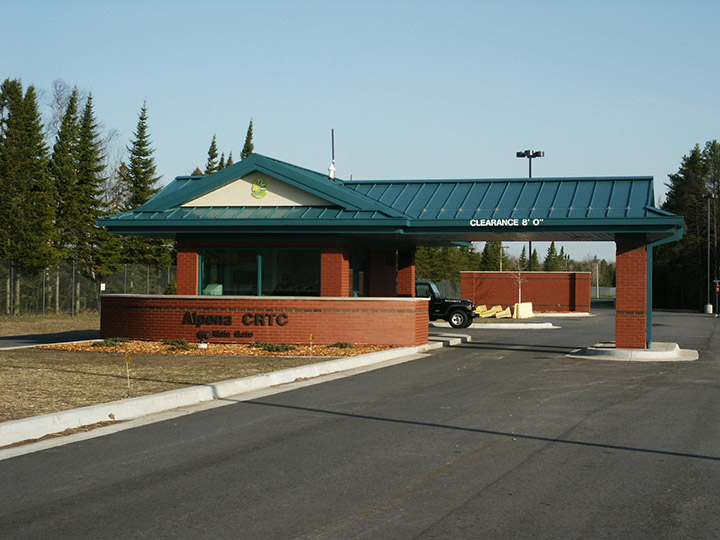Loud noise may have been sonic boom

Courtesy Photo The entrance of the Alpena Combat Readiness Training Center is seen in this photo from the National Guard.
ALPENA — A loud noise heard by many Alpena residents on Tuesday may have been a sonic boom, officials say.
The local 911 center received numerous calls reporting the noise, as did several police agencies.
Police, while able to offer no concrete explanation, speculated that the noise was caused by an aircraft from the Alpena Combat Readiness Training Center breaking the sound barrier.
A sonic boom is a shockwave heard by people on the ground when an aircraft travels faster than the speed of sound. It is often described as sounding like an explosion or thunderclap.
Travis Weide, spokesperson for the Lafarge North America plant in Alpena, said he received many calls asking if the noise came from the plant.
LaFarge was not blasting that evening, Weide said.
Several military aircraft are being used for training in the Alpena area this week. F-16 Fighting Falcons from the 180th Wing in Toledo — which regularly use the Alpena airspace and refuel at CRTC — have been seen flying in formation near the lakeshore.
Pilots of several C-130 aircraft from Rhode Island and Delaware, temporarily displaced by activity on the East Coast, were also training at the CRTC earlier this week.
Capt. Andrew Layton, public affairs officer for the Michigan National Guard, said the CRTC is reviewing flight records, but can’t confirm if the sound was a sonic boom.
“It is possible for air pressure and weather conditions to create an acoustic effect that amplifies the normal sounds of jet engines,” Layton said in a written statement.
A 1973 rule made flight beyond the speed of sound — and the booms that came with it — illegal over American soil and offshore where the boom could reach land.
As of September 2018, Congress agreed to allow the Federal Aviation Administration to develop new rules to govern noise standards for supersonic flight, also called travelling at Mach 1. Those regulations were to be in place by the end of 2020.
As of March 30, the FAA website still states, “Currently, U.S. law prohibits flight in excess of Mach 1 over land unless specifically authorized by the FAA.”
There is “a probability” that a sonic boom will cause some damage, such as shattered glass, and it may cause ground motion, according to the U.S. Air Force website.
Air Force procedures require that, whenever possible, military training flights faster than the speed of sound be over open water, above 10,000 feet, and no closer than 15 miles from shore. Supersonic operations over land must be conducted above 30,000 feet or, when below 30,000 feet, in specially designated areas approved by the U.S. Air Force and the FAA.




